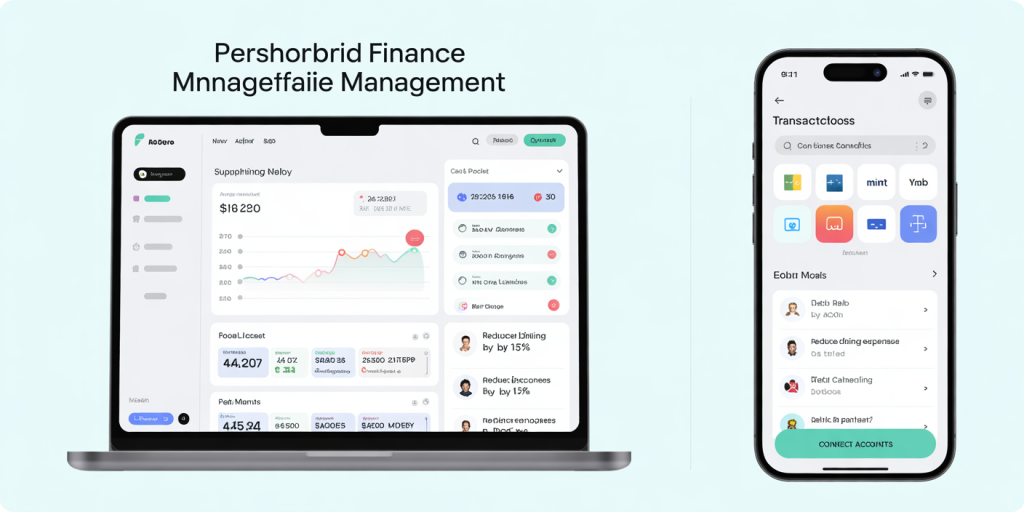How to Create an Effective Personal Budget
Managing personal finances can often feel overwhelming, especially when daily expenses pile up and financial goals remain just out of reach. Creating an effective personal budget is one of the most powerful ways to gain financial control, reduce stress, and achieve your monetary objectives. A well-structured budget serves as a clear roadmap, helping individuals allocate resources, avoid unnecessary debt, and plan for the future with confidence.
Recent studies reveal that nearly 60% of Americans don’t maintain a household budget, contributing to a broad lack of financial preparedness (NFCC, 2023). This underscores the urgent need for practical tools and methodologies that anyone can adopt. Whether you’re a college student managing tuition and living expenses or a professional aiming for retirement savings, an effective personal budget is indispensable.
Understanding the Foundations of Personal Budgeting
Before diving into the creation of your budget, it’s crucial to understand what budgeting entails and its fundamental components. A personal budget is simply a plan that tracks income against expenses over a certain period. The two key pillars are income — the funds you receive — and expenses — the funds you spend.
To start, gather all sources of monthly income, such as salary, freelance earnings, dividends, or rental income. Equally important is listing all monthly expenses, both fixed (rent, loan payments) and variable (groceries, entertainment). According to a 2022 report by the U.S. Bureau of Labor Statistics, the average U.S. household spends 33% of its income on housing and 13% on transportation, emphasizing the importance of categorizing expenses accurately.
The goal of budgeting is to strike a balance where expenses do not exceed income, allowing for savings. Expense tracking apps like Mint and YNAB (You Need A Budget) have become popular tools, enabling users to visualize and manage cash flows easily.
Setting Clear Financial Goals
An effective personal budget is goal-oriented. Without clear objectives, budgeting can feel like an endless chore. These goals might include paying off debt, saving for a down payment on a house, building an emergency fund, or investing for retirement.

Start by categorizing your goals as short-term (less than one year), medium-term (1-5 years), and long-term (5+ years). For example, paying off credit card debt might be a short-term goal, while accumulating $20,000 for a home down payment could be medium-term.
Consider the case of Jessica, a 30-year-old marketing professional. She created a budget with a goal to save $10,000 in an emergency fund within 12 months. By allocating $835 monthly towards this fund and reducing discretionary spending, she achieved this goal without compromising essential expenses.
Defining goals helps prioritize spending and savings. It provides motivation to adhere to the budget and to make conscious financial decisions. Financial advisors recommend revisiting your goals quarterly to adjust for any changes in income or expenses.
Tracking and Categorizing Expenses Effectively
Tracking expenses meticulously is the heart of personal budgeting. Without understanding where your money goes, it’s impossible to identify wasteful spending or opportunities for savings. Start by keeping a detailed record for at least one month.

Divide expenses into categories such as:
| Category | Examples | Average U.S. Household Spending (%) |
|---|---|---|
| Housing | Rent, mortgage, utilities | 33% |
| Transportation | Car payments, fuel, public transit | 13% |
| Food | Groceries, dining out | 12% |
| Health | Insurance, medications | 8% |
| Entertainment | Movies, subscriptions | 5% |
| Savings/Debt | Savings deposits, debt payments | Variable |
| Miscellaneous | Clothing, personal care | 7% |
(Source: U.S. Bureau of Labor Statistics, 2022)
A practical example is Tom, a freelance photographer, who found after tracking his expenses that subscription services consumed an unexpected 10% of his monthly budget. By canceling unused subscriptions, he redirected those funds toward his student loan payments.
Expense tracking tools can automate much of this process by linking to your bank accounts and categorizing transactions. However, manual tracking via spreadsheets or notebooks can be equally effective for those who prefer a hands-on approach.
Creating a Realistic Budget Plan: Allocation and Adjustments
Once income and expenses are documented and goals set, the next step is to draft your budget plan. The 50/30/20 rule is a widely recommended methodology: 50% of income goes to needs, 30% to wants, and 20% to savings and debt repayment.
Here’s a comparative example of monthly budget allocation for two individuals earning $4,000 after taxes:
| Category | Jessica’s Budget (Goal: Emergency Fund) | Tom’s Budget (Debt Repayment Focus) |
|---|---|---|
| Needs (50%) | $2,000 (Rent, Utilities, Food) | $2,000 |
| Wants (30%) | $800 (Dining out, entertainment) | $1,000 (New equipment, subscriptions) |
| Savings/Debt (20%) | $1,200 (Savings monthly target) | $1,000 (Debt repayment) |
Jessica is saving aggressively, while Tom prioritizes debt payment, reducing wants accordingly.
Flexibility is critical. Budgets should be revisited monthly and adjusted based on changes in income, unexpected expenses, or shifting priorities. Over time, your budget will reflect a balance between discipline and adaptability.
Managing Variable Expenses and Handling Unexpected Costs
One of the most challenging aspects of budgeting is managing variable and unexpected expenses. Variable expenses fluctuate monthly and can easily derail your budget if unplanned. Examples include dining out, gifts, or travel expenses.
A practical approach is to establish a “buffer” or “miscellaneous” category with an allocated amount each month. For example, Maria allocates 10% of her income towards variable costs, which has prevented her from overdrawing her accounts several times.
Unexpected costs such as medical emergencies or car repairs require an emergency fund. Financial advisers commonly recommend saving between three to six months’ worth of living expenses in liquid assets. This fund acts as a financial safety net, minimizing the need for high-interest loans or credit card use.
Additionally, certain expenses can be minimized with proactive strategies. For instance, negotiating medical bills or refinancing loans can reduce monthly fixed costs, creating more room in the budget. A study by NerdWallet in 2023 found that refinancing mortgages saved homeowners an average of $300 per month, demonstrating the tangible benefits of proactive financial management.
Using Technology and Tools to Enhance Budgeting
The digital era offers numerous tools and applications that simplify budgeting and tracking. Utilizing technology not only saves time but can improve accuracy and consistency.
Apps like Mint, YNAB, and PocketGuard automatically sync with bank accounts, categorize transactions, and provide visual reports. For example, YNAB emphasizes zero-based budgeting, where every dollar is assigned a purpose, reducing waste and improving goal attainment.
For those wary of digital tools, spreadsheets remain a versatile option. Google Sheets and Excel offer customizable templates that can be tailored to specific needs, integrating charts and formula-driven analyses.
Moreover, some banks provide built-in budgeting tools within their mobile apps. Access to real-time financial data combined with automated alerts can enhance spending awareness and facilitate faster adjustments.
Future Perspectives: Evolving Your Budget with Life Changes
A personal budget is not a “set and forget” document. Life events such as a job change, marriage, a new child, or retirement significantly affect financial priorities and require adjustments in your budgeting approach.
For example, newlyweds Sarah and Mike combined their budgets, which entailed merging overlapping expenses and recalibrating savings goals to buy a family home. Their previous solo budgets became obsolete and required coordinated planning.
As incomes rise, it’s essential to update savings targets and consider investment opportunities. According to Fidelity Investments (2023), individuals who increase their retirement contribution rate by just 1% annually can accumulate 30% more wealth by retirement age.
Technology will also continue to evolve, with AI-driven budgeting apps expected to offer personalized recommendations, detect spending anomalies, and simulate financial scenarios, empowering smarter decision-making.

Finally, financial literacy plays a critical role in sustaining effective budgeting habits. Ongoing education about managing credit, investing, and tax planning can optimize your budget’s effectiveness over time.
—
Creating an effective personal budget is both an art and a science. It requires understanding your income and expenses, setting realistic objectives, tracking meticulously, and adapting as circumstances evolve. By incorporating practical strategies, leveraging technology, and planning for the future, anyone can transform their financial life from uncertainty to stability and growth. The empowerment that comes with a well-executed budget is invaluable, enabling more confident decisions and a more secure financial future.
—
References: National Foundation for Credit Counseling (NFCC), 2023. Household Financial Habits Survey. U.S. Bureau of Labor Statistics, 2022. Consumer Expenditure Survey. NerdWallet, 2023. Mortgage Refinancing Statistics. Fidelity Investments, 2023. Retirement Savings Annual Report.
